Best Way to Use RMDs Without Paying Unnecessary Taxes
👉 How would it feel to know exactly when you can retire and how much you can spend without running out of money? Let’s talk. In a complimentary call, I’ll walk you through your numbers and show you strategies that could help you retire with more confidence and less stress. Schedule Your Call
Why Listen to Me?
Over the past decade, I’ve helped hundreds of families navigate the complexities of retirement income planning. From managing Required Minimum Distributions (RMDs) to building multi-generational wealth, I’ve seen what works and what doesn’t. Investors I’ve worked with want more than cookie-cutter advice. They want tax-smart, goal-aligned strategies that help them enjoy their retirement without leaving money on the table. That’s why I’m sharing this today.
Most retirees assume the "required" part of RMDs means they should withdraw only that minimum. But here’s the catch: sticking only to the RMD could be costing you in taxes, lost lifestyle opportunities, and legacy impact.
Key Takeaways
- RMDs are a tax trigger, not a strategy.
- Withdrawing only the minimum might not align with your actual income needs or goals.
- Strategic withdrawals (even above the RMD) can reduce long-term tax liability.
- RMDs affect Medicare premiums and taxation on Social Security.
- Your distribution plan should align with your goals: lifestyle, taxes, and legacy.
What Is an RMD and Why It Exists
Most traditional retirement accounts — 401(k)s, IRAs, 403(b)s — come with a catch: taxes are deferred, not avoided. The IRS eventually wants its share. Enter the RMD.
In 2025, RMDs must begin at age 73 (thanks to the SECURE Act 2.0). That age rises to 75 in 2033. If you fail to take your RMD, you face a 25% penalty, which can drop to 10% if corrected quickly.
RMDs are calculated by dividing your account balance (as of December 31 of the previous year) by a life expectancy factor from IRS tables.
Example:
If you’re 75 in 2025 and your IRA is worth $500,000, your RMD will be about $20,325 based on a divisor of 24.6.
The Mistake: Using the RMD as Your Withdrawal Strategy
1. It’s Tax-Driven, Not Goal-Driven
In my experience, retirees who withdraw only the RMD do so because they want to minimize taxes. That’s understandable — but it's often shortsighted.
Problem: Taxes are just one piece of the puzzle. You also need to consider:
- Your income needs
- Long-term care planning
- Legacy goals
- Market opportunities
Example: I had a client who only took their RMD each year, even though they had a $2M IRA. When they reached 85, their RMD was over $100,000 — pushing them into a higher tax bracket, increasing Medicare premiums, and triggering taxation on their Social Security.
2. You May Be Underspending in the Go-Go Years
Early retirement is when you're most likely to:
- Travel
- Enjoy hobbies
- Be in good health
If you stick to the RMD, which starts low, you may not have enough income to enjoy life fully during those "go-go" years.
In my experience, this is where people leave the most value on the table. You saved and sacrificed for decades, so why live like you’re broke now?
Taxes: Today vs. Tomorrow
3. Roth Conversions Could Make More Sense
Let’s say you’re 65 and in a lower tax bracket. If you convert $50,000 a year to a Roth IRA, you pay taxes now, but avoid larger RMDs later.
Investors I’ve worked with who take this approach often reduce lifetime taxes by six figures. The Roth also becomes a tax-free inheritance for their kids.
Pro: Reduces future RMDs and potential tax burdens
Con: You pay taxes now, but likely at a lower rate
4. Watch IRMAA
RMDs increase your adjusted gross income (AGI), which affects:
- Medicare premiums via IRMAA (Income Related Monthly Adjustment Amount)
- Social Security taxation
Even small increases in income can bump you into a higher IRMAA tier, costing hundreds or thousands annually.
Tip: Taking strategic withdrawals before RMD age (even if not required) can lower future IRMAA costs.
Wealth Preservation vs. Wealth Utilization
5. Don’t Let Fear Paralyze Your Spending
Retirement is the time to turn assets into income, not just preserve balances. In my experience, the biggest emotional hurdle for many retirees is allowing themselves to spend.
I get it, you’ve been a disciplined saver for decades. But clinging to your balance sheet out of fear of running out is often more harmful than helpful.
"No-go years" (typically after 85) involve fewer expenses.
Assisted living needs can be addressed with insurance, other savings, or strategic withdrawals, not by starving your lifestyle.
6. Required Minimum Distribution ≠ Recommended Maximum Distribution
You are allowed to take more than the RMD, and often you should. Just make sure your withdrawals are part of a broader tax and lifestyle strategy.
Investors I’ve worked with often find that taking 4–5% (vs. the RMD rate) in early retirement years better matches their goals.
What If You Don’t Need the Money?

Some retirees live on pensions, Social Security, or rental income, and don’t need their RMDs.
Options:
Gift to kids or grandkids now (pre-inheritance)
Do Qualified Charitable Distributions (QCDs), tax-free giving up to $105,000/year
Fund a brokerage account, reinvest what you don’t spend
Legacy planning should be proactive. Delaying decisions just piles up tax burdens later.
👉How would it feel to know exactly when you can retire and how much you can spend without running out of money? Kind of crazy that you just found this blog… and your next step might be booking a complimentary call. In that call, we’ll explore your numbers and see what’s truly possible for you. Schedule Your Call
Conclusion
Required Minimum Distributions are just that, the minimum. They are a tax rule, not a plan.
Whether you:
- Want to travel and live more in your go-go years,
- Aim to reduce long-term taxes,
- Or want to leave a smart legacy for your kids, your distribution strategy needs to reflect your goals, not just the IRS minimums.
Take control of your money. Use your retirement assets to live fully and smartly.
Ready to create a retirement income plan that works for your life, not just your tax form?
Take our quick Retirement Readiness Quiz and get your custom plan.
FAQs
What age do RMDs start at in 2025?
Answer: Age 73 under the SECURE Act 2.0. It will increase to age 75 by 2033.
What happens if I miss my RMD?
Answer: You may face a 25% penalty on the shortfall. If corrected in two years, that drops to 10%.
Should I take more than the RMD?
Answer: Possibly! Especially if it helps reduce long-term taxes or aligns better with your spending needs or legacy goals.
Disclaimer: Case studies are hypothetical and do not relate to an actual client of Lock Wealth Management. Clients or potential clients should not interpret any part of the content as a guarantee of achieving similar results or satisfaction if they engage Lock Wealth Management for investment advisory services.
Sources:
https://www.covenantwealthadvisors.com/post/rmd-tax-strategies
https://rcsplanning.com/required-minimum-distributions/
https://www.schwab.com/learn/story/rmd-reference-guide
https://smartasset.com/retirement/rmd-distribution-strategies
